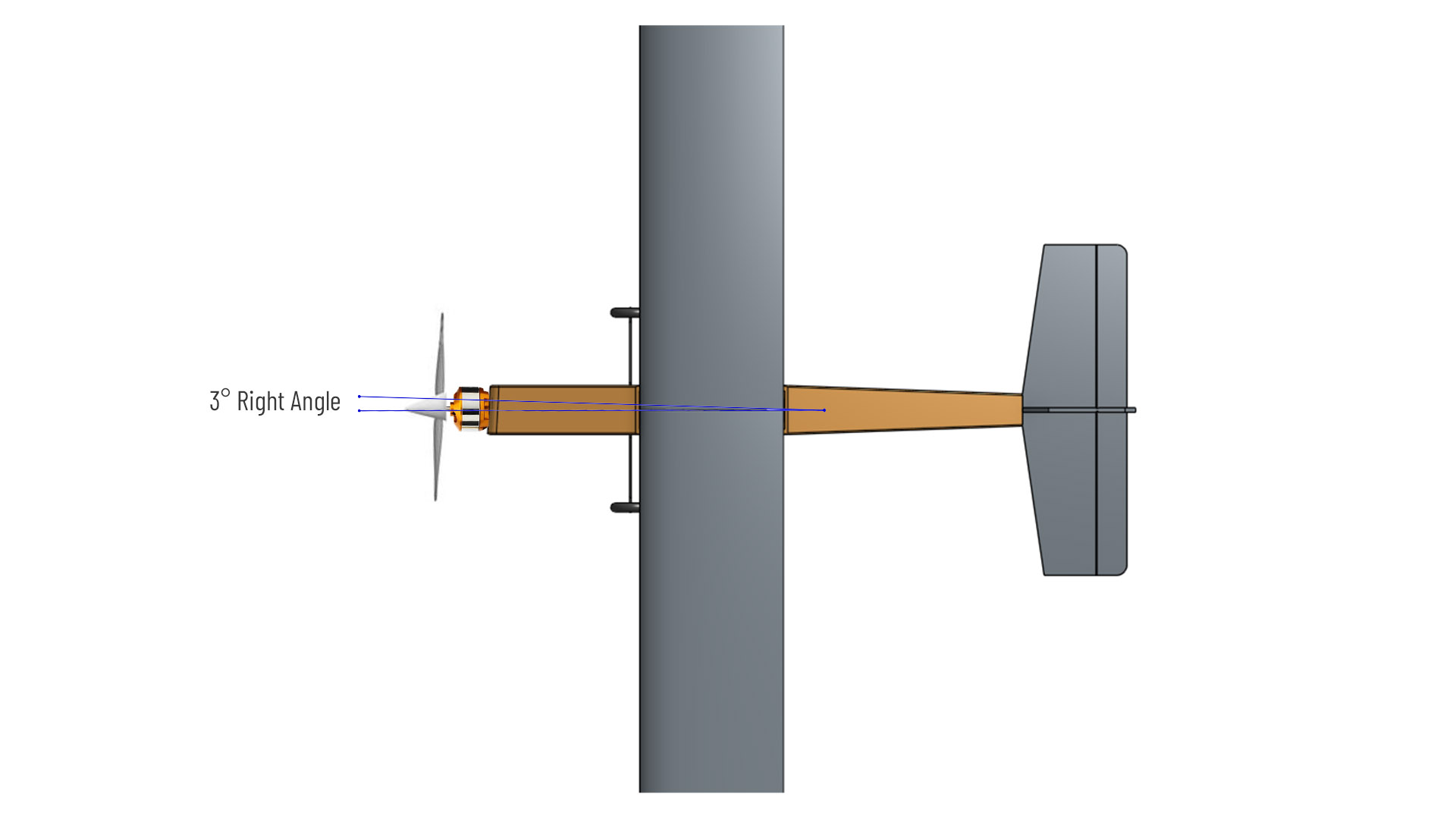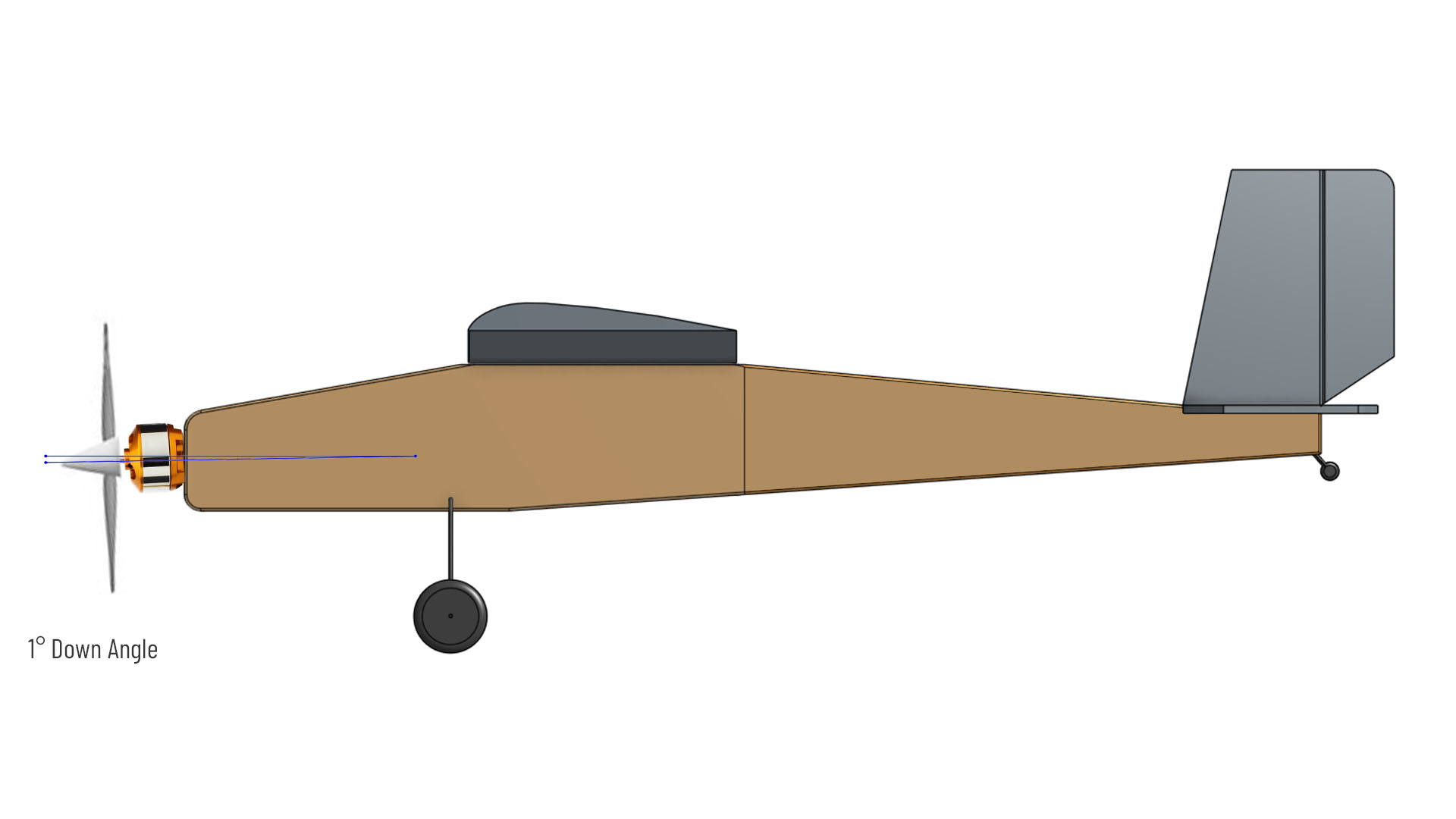In model aircraft, the motor is often mounted with a slight rightward (2-3 degrees) and downward (approximately 1 degree) angle. This setup is crucial for flight stability and controllability, as it helps counteract various aerodynamic forces and motor-related effects.
1. Right Thrust and Its Reasons
The engine is mounted with a slight rightward angle to counteract the following effects:
- Torque Effect:
As the propeller rotates, Newton’s Third Law dictates that the aircraft experiences an opposite reaction, causing a leftward rolling tendency. The rightward engine angle helps counteract this effect. - P-Factor (Asymmetric Thrust):
During high-angle climbs, the descending propeller blade generates more thrust than the ascending blade. This imbalance causes the aircraft’s nose to pull to the left. Tilting the motor to the right helps compensate for this. - Spiraling Slipstream:
The propeller creates a rotating airflow that wraps around the fuselage and strikes the vertical stabilizer, pushing the nose to the left. The rightward engine angle reduces this effect, minimizing the need for rudder corrections.
2. Down Thrust and Its Reasons
The motor is also angled slightly downward to help manage the following aerodynamic effects:
- Thrust Line and Angle of Attack Balance:
In level flight, the motor’s thrust is aligned with the aircraft’s centerline. However, increasing throttle can create an upward pitching moment, causing the nose to rise. A slight downward tilt in the engine reduces this tendency, allowing for smoother handling. - Preventing Nose-Up Behavior During Throttle Increase:
When throttle is applied suddenly, the increase in thrust can cause the aircraft to pitch up excessively. The down thrust helps counteract this effect, ensuring a more controlled climb.
Conclusion:
Tilting the motor slightly to the right and downward in single-motor model aircraft enhances flight stability and control by minimizing torque effects, propeller-induced yaw, and unwanted pitch movements. This setup reduces the need for constant rudder and elevator corrections, particularly during takeoff and low-speed flight.
These principles apply not only to model aircraft but also to full-scale airplanes, making them a fundamental aspect of aerodynamic design for stable and predictable flight behavior.


